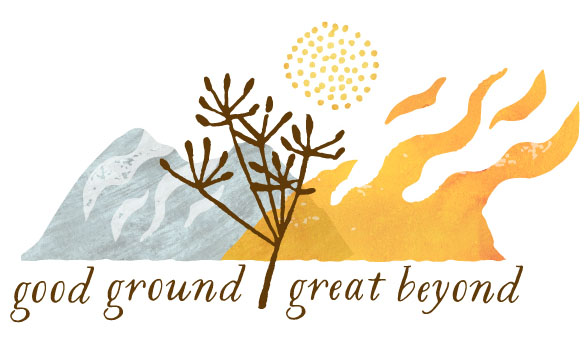Living the Questions
I came across a post today that simply read: “How do you let go?”
That is a real question, in the sense that Rilke encouraged in Letters to a Young Poet. A question that has no immediate answers, a question you live into. And that living-into yields not a sense of definitiveness or fruition the urge for an answer wants, but offers rather, a realignment and transmission in seeing, feeling and opening differently.
With any death and change there are the events and the transforming. There is the outer layer of pure presence and absence and then there is our own swimming and becoming and dissolving in new arrangements and processes. We might try to “figure out” the isolated parts of change in ways that create and embed patterns of personal and cultural narrative which often can strengthen our dualistic notions (good vs bad), fuel the hope for transcendence of the “bad” and fortify our attachment to the safer logics of linearity. We reflexively feel pain is a problem and that somehow the happiness-es we are capable of envisioning are a real goal that grants it’s own permanency once attained. Striving toward happiness is not innately bad, necessarily. In experiencing ease and delight we all instinctively seek it out and in greater quantity. But in blindly doing so, we can avoid our and the worlds nature and depths. When we one-pointedly work toward some perfection of happiness we remain ignorant to how happiness is changing and conditional and in interdependent dance within a spectrum of experience, wanted and unwanted, that together create an enigmatic, ever-morphing totality. In trying to isolate the sweet bits or stretching them into an idealized end goal, they merely continue their compulsion to dissolve as we continue to try and fail and feel frustrated by the nonsensical bewilderment which keeps our perfections distant.
In her book, Why Religion, Elaine Pagels weaves her decades long scholarship in Gnostic Christianity with her journey in grieving the deaths of her first son and her husband. In one chapter she writes about origin stories and the evolution of the understanding of Genesis, how it became appropriated as meaning suffering and death were punishment. And how this translates into our daily lives as vulnerable and changing beings going through death. She writes, “Since our everyday experience shows that we’re a fragile, mortal species like any other, why do people keep telling and retelling stories that blatantly contradict that experience? Or do stories like that emerge from our stubborn instinct of denial, as with Mark Twain, who joked that “I know that everyone dies, but I always thought an exception would be made in my case?” “
Answers, at first blush, seem more comforting than not knowing. We have our story and our category and that gives us some sense of organization which confirms the space around us and the ground beneath us. But answers to our greater questions are often snapshots of a moving reality, of process and becoming. Perfect and true in the moment of capture but less of a match as we experience and interact and come into deeper knowledge.
This all brings me back to letting go. Not only do I continue to hold this notion like an invitation in my life and an open question, but I learn continually from the folks I work with in the intimate spaces of dying and death. There seems to be no one moment of letting go. There are thresholds and times we leap or watch others do so. There are cliffs jumped and bridges crossed. There are those choices we make and the departures we have no choice in stopping or pausing or reversing. So letting go in the latter inevitablities invites us into experience. The letting go can be small or large discoveries of movement, of finding our our own bodies suddenly strange, learning ourselves anew in altered configurations. Letting go is sitting in the senses unpoetically and learning indescribable nuances of space and nature and eternity. All this wears, whittles and erodes the ego, which is the refining fire and pulsing of letting go. We find ourselves embodied in order to, in part, breathe distinctly into our unique form while also, ultimately, releasing any false notions of distinction as we do. It is our compelling and fundamental paradox: being full and empty at once.
We love and die and make art of both. And that art is most striking as pure resonance which only means devoid of any sheen of confirmation-need or distance-from. That demands our whole throat and raw insides opened out. It demands smelling smells and tasting each flavor and knowing the foulness and nourishing functions of waste. Light and dark, fragrant and foul. Such is the liminal space of being human.
Elaine Pagels also shared something that a psychologist friend said to her and her husband after their son died. She said, “Whenever I’ve known of the death of a child, the parents either tried to ignore what happened, and it ruined their lives- or else they turned it into the centerpiece, and it ruined their lives.” And this is such a central truth in so many of our devastations and transformations: that any extreme end of a spectrum, which amounts to any determination that one approach is the only approach, one belief the only belief, one snapshot the full totality, fails our tender plight. Letting go is our pulsing middle, our shaky paradoxical being. Full and empty. Living and dying. Loving in spite of and in celebration of our aloneness, the mystery of our beautiful human path.

